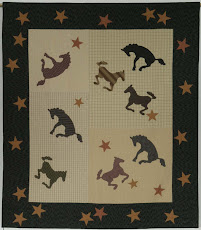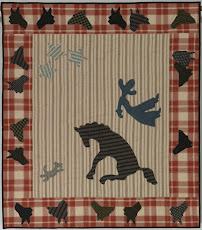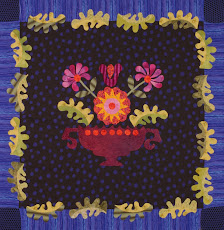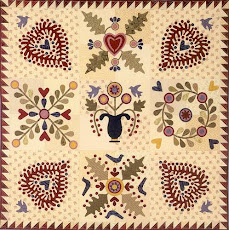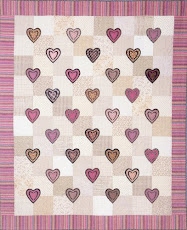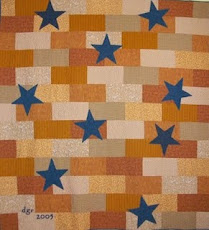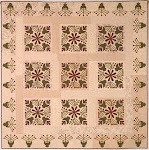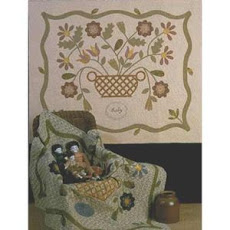After my last post, Lorraine wrote "I would like to see a post with how you cut the inside curve BEFORE it is glued down. I can't picture it."
Well, Lorraine, you were right to call me on that! I thought about showing that part of the process when I wrote the last post, but it's impossible to show the clipping in a photograph. And my illustration skills are nil!
How you clip an inner curve is important, though, because you need to make the fewest cuts possible. So I made up a couple of little illustrations in Photoshop Elements. As you can see, I'm not lying about my drawing skills! But I hope this helps. Please feel free to write in with more questions.
If you compare the two illustrations at left showing how to make a Y-shaped cut in the seam allowance of a narrow curve to the photo at right showing the seam allowance after it's turned under, you can see that the top of the clipped "Y" turns into a vee-shape when the seam allowance is folded and glued to the back of the fabric.
If you are working with a wider curve, then you can dispense with making that first clip into the center of the curve and just make 2 angled cuts into the corners of the curve:

When you're making the clips into the corners of the curve, stop clipping just a thread or 2 from the freezer paper. While you're turning under the seam allowance, watch for little threads at those clipped points, and be sure to fold and glue all stray threads to the back of the freezer paper. You should sew extra stitches at the clipped curves.
I hope this helps! Thanks for asking questions!
Karla










